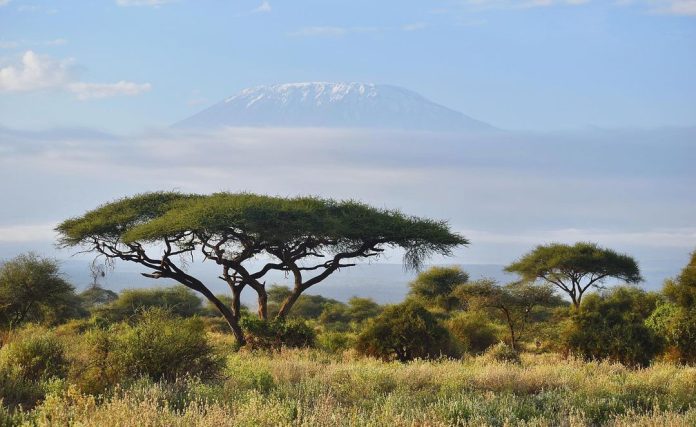According to a UN report, glaciers at many UNESCO World Heritage sites including Yellowstone and Kilimanjaro National Park will likely vanish by 2050.
The UN agency warned and urged leaders to act fast to save the rest. The warning followed a study of 18,600 glaciers at 50 World Heritage sites, covering around 66,000 square kilometers (25,000 square miles), which found glaciers at a third of the sites were “condemned to disappear”.
The study “shows these glaciers have been retreating at an accelerated rate since 2000 due to CO2 emissions, which are warming temperatures”, UNESCO said.
The glaciers were losing 58 billion tons of ice every year, equivalent to the combined annual water use of France and Spain, and were responsible for nearly five percent of observed global sea-level rise, the agency explained.
“Glaciers in a third of the 50 World Heritage sites are condemned to disappear by 2050, regardless of efforts to limit temperature increases,” UNESCO said.
“But it is still possible to save the glaciers in the remaining two-thirds of sites if the rise in temperatures does not exceed 1.5°C compared to the pre-industrial period.”
Countries have pledged to keep global warming to 1.5 degrees Celsius above pre-industrial levels — a goal the world is set to miss on current emission trends.
“This report is a call to action,” said UNESCO head Audrey Azoulay, ahead of the COP27 climate summit in Egypt starting on Monday.
“Only a rapid reduction in our CO2 emissions levels can save glaciers and the exceptional biodiversity that depends on them. COP27 will have a crucial role to help find solutions to this issue.”
The glaciers in thirds of UN World Heritage sites will melt within three decades, a UNESCO report found.
Mt Kilimanjaro’s last glacier will vanish as well as glaciers in the Alps and Yosemite National Park in the US.
In Europe, some glaciers in the Pyrenees and in the Dolomites will also probably have vanished in three decades’ time.
Also read: Rwenzori Mountains at the Edge of Losing Ice Glaciers at the Peaks
The melting of ice and snow is one of the 10 key threats from climate change, an Intergovernmental Panel on Climate Change report published in February said.
“We hope we might be wrong, but this is the hard science,” said UNESCO project officer Tales Carvalho Resende, one of the authors. “Glaciers are one of the valuable indicators of climate change because they’re visible. This is something we can really see happening.”
The remaining glaciers in the other two-thirds of UN World Heritage sites could be saved, but only if the world limits global warming to 1.5C, the authors say. Another UN report last week found that the world currently had “no credible pathway” to achieve that.
“What is quite unprecedented in the historical record is how quickly this is happening,” said Beata Csatho, a glaciologist from the University of Buffalo, who was not involved in the research.
The report mentioned other UNESCO sites that are to lose their prestigious glacier in east Africa beside Kilimanjaro. These are Mt. Kenya, Mt Rwenzori, and the Virunga Mountains in DRC.








